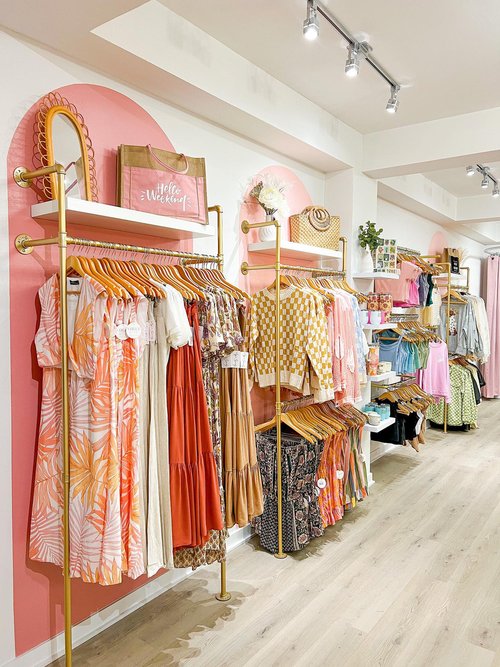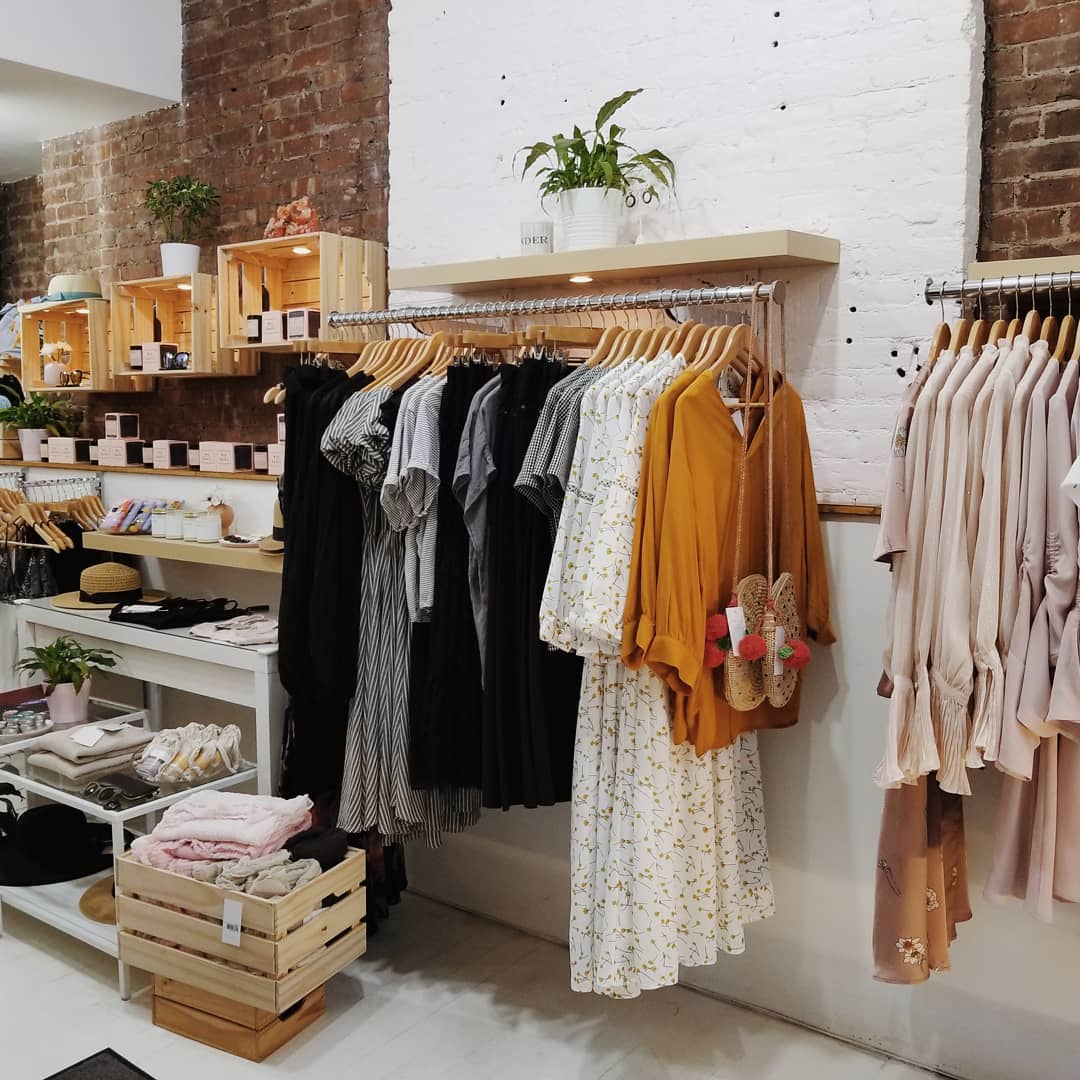Discovering the World of Lasting Boutique Fashion Brands
Discovering the World of Lasting Boutique Fashion Brands
Blog Article
Sustainable Fashion: Just How Eco-Friendly Apparel Is Forming the Future of Style
As the garment industry faces boosting scrutiny over its environmental influence, the increase of sustainable fashion supplies a promising alternative that aligns style with environmental obligation. Utilizing ingenious products such as recycled fibers and plant-based fabrics, along with innovative methods like electronic and 3D printing, developers are redefining what it means to be fashionable in the contemporary age. Concurrently, the expanding appeal of upcycling and second hand culture is promoting a shift in the direction of a circular economic climate. Yet, just how does this activity genuinely influence the future trajectory of fashion, and what difficulties lie in advance in its prevalent adoption?
Cutting-edge Sustainable Products
As the style market grapples with its ecological influence, ingenious lasting materials have actually emerged as a critical solution for lowering eco-friendly impacts. These products not only lower dependency on fossil fuels yet also reduce hazardous chemical use and water consumption.
Along with plant-based materials, developments in biofabrication have led to the advancement of lab-grown fabrics. Mycelium natural leather, derived from mushroom origins, provides a flexible and naturally degradable choice to pet leather. Its manufacturing causes considerably lower carbon emissions and water use, making it a much more sustainable alternative for style developers seeking to straighten with green techniques.
Recycled products are also acquiring grip, with polyester made from recycled plastic containers standing for a considerable advancement. This innovation not just draws away plastic waste from oceans and land fills but additionally lowers power usage compared to creating virgin polyester. Together, these products emphasize the possibility for an extra sustainable fashion business, leading the way for ecologically mindful layout and production.
Eco-Conscious Manufacturing
Building on the technologies in sustainable materials, the style industry is likewise re-evaluating its manufacturing procedures to additionally reduce environmental influence. Key strategies consist of minimizing water usage, minimizing carbon emissions, and getting rid of unsafe chemicals.
One more vital facet is the reduction of hazardous chemicals traditionally utilized in coloring and completing fabrics. Eco-conscious manufacturers are moving in the direction of plant-based dyes and waterless dyeing innovations, which not just protect regional environments but likewise enhance employee security. Technologies like digital printing minimize textile waste and power intake, supplying a cleaner choice to traditional methods.
With the improvement of blockchain modern technology, firms can currently provide in-depth insights right into their supply chains, making certain honest and environmentally friendly practices at each step. As the need for eco-conscious products grows, producers are urged to introduce, guaranteeing that the future of fashion is both sustainable and elegant.
The Rise of Upcycling
Upcycling, a transformative practice in lasting fashion, entails creatively repurposing disposed of materials into new, high-quality items. This innovative strategy not only lowers waste however also reduces the demand for resources, therefore decreasing the environmental influence of garments production. By reimagining and rebuilding existing things, designers and fashion brand names are able to infuse originality into their collections while promoting ecological duty.

Additionally, the upcycling motion has empowered independent designers and small businesses, that commonly lead in technology as a result of their dexterity and creative thinking. By profiting my link from the abundant availability of unused products, these entities add to a circular economy, demonstrating that style can be both sustainable and trendy. Through upcycling, the market takes considerable strides in the direction of a much more responsible and conscious future.
Thrift Society's Influence
The expanding second hand society dramatically improves the landscape of sustainable style, highlighting the significance of conscious intake. This social change motivates customers to embrace pre-owned clothing, thus minimizing the demand for brand-new garment production and reducing environmental effect. Second hand buying not only extends the lifecycle of clothing however additionally reduces the carbon impact associated with production, carrying, and getting rid of garments.
An essential facet of thrift culture is its democratization of style. By offering a large array of designs from various periods at budget friendly costs, second hand stores make style accessible to a wider audience. This ease of access cultivates a feeling of individuality and imagination, as customers mix and suit one-of-a-kind pieces to curate customized wardrobes without adding to the rapid style cycle.
Moreover, second hand society advertises circularity in fashion, straightening with the concepts of a round economic climate. As even more consumers and designers accept thrift culture, the style sector is urged to adjust, incorporating sustainable methods to fulfill the expanding demand for eco-conscious options.

Future Trends in vogue
Style's advancement is progressively shaped by technical developments and sustainability-driven efforts. As customers become much more ecologically mindful, the sector is responding with groundbreaking improvements that redefine the future of design. One popular trend is the increase of digital style, where digital garments can be worn in increased truth environments, significantly decreasing material waste. This shift not only caters to the digital-savvy customer however likewise minimizes the environmental footprint commonly related to garment manufacturing.
Furthermore, the combination of blockchain innovation uses brand-new possibilities in transparency and traceability, enabling consumers to confirm the sustainability credentials of their apparel. boutique fashion. This guarantees responsibility in supply chains and promotes honest sourcing methods. 3D printing is yet an additional innovation that assures to revolutionize making procedures by enabling on-demand production, therefore reducing excess inventory and waste
Additionally, the development of bio-fabricated materials, such as lab-grown leather and plant-based textiles, presents sustainable alternatives to traditional products. These innovations decrease reliance on animal products and resource-intensive plants. As these modern technologies mature, they are positioned to change the style landscape, merging style with sustainability. The future of style, consequently, depends on a smooth mix of modern technology, technology, and eco-friendly duty.
Verdict
The makeover of the fashion market through sustainable techniques suggests a crucial shift in the direction of environmental accountability. This advancement not only aligns fashion with environmental sustainability however also establishes a precedent for future trends focused on responsibility click now and innovation.
As the style market faces increasing analysis over its environmental impact, the increase of sustainable style uses an appealing alternative that aligns style with environmental duty.As the fashion industry grapples with its environmental effect, cutting-edge lasting like it materials have arised as a vital solution for minimizing eco-friendly footprints. With each other, these products underscore the capacity for an extra sustainable style market, leading the means for environmentally mindful layout and production.
Building on the technologies in sustainable products, the style industry is likewise re-evaluating its production processes to additionally reduce ecological influence. boutique fashion.Upcycling, a transformative practice in sustainable style, involves artistically repurposing thrown out materials right into new, top notch products
Report this page